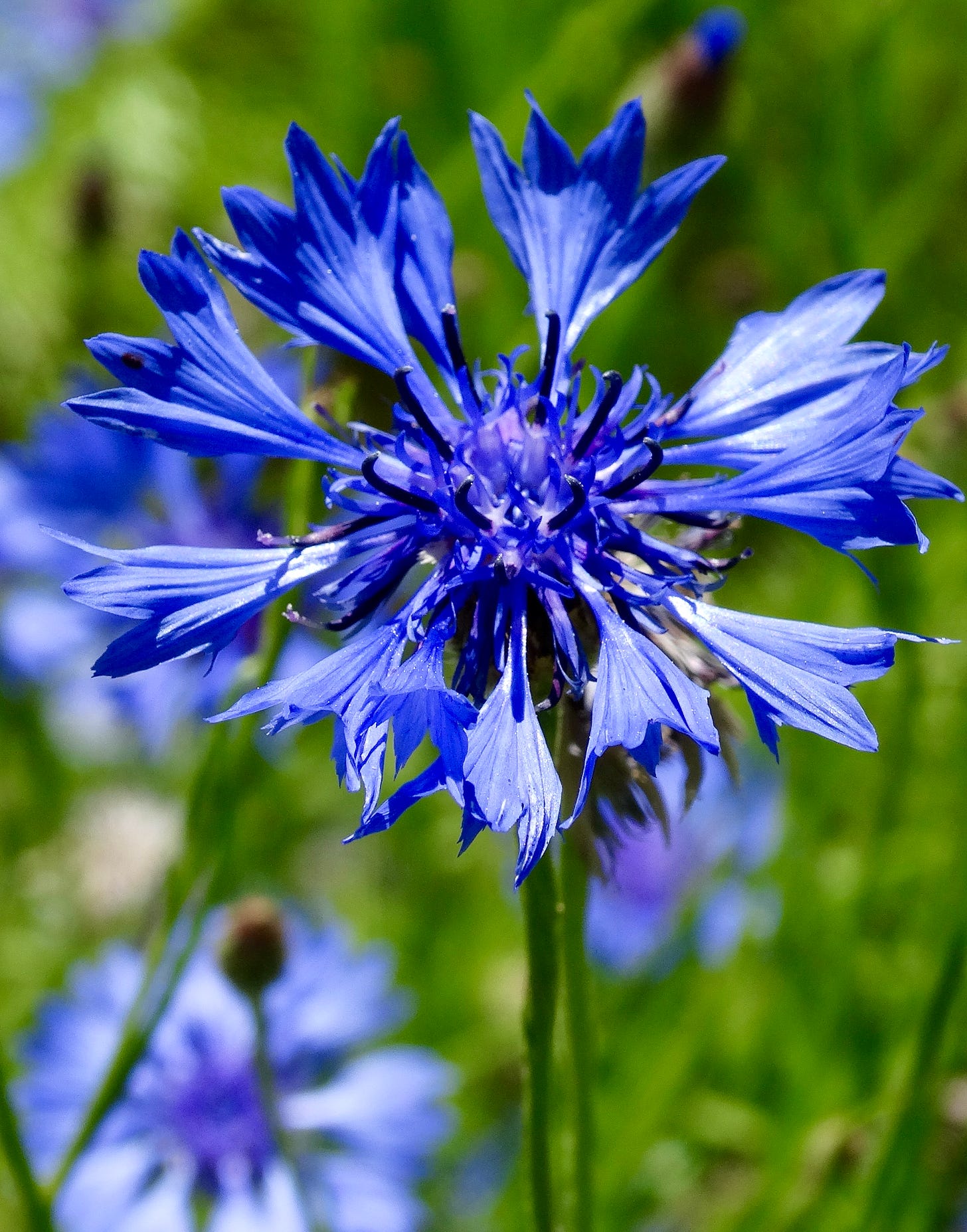In autumn of 2020, I needed something positive to anticipate.
The COVID-19 lockdown had ended months earlier, but the vaccine wasn’t available yet. We knew that we couldn’t look forward to a Christmas visit with our granddaughter in Canada. We also knew that Jim was going to have open-heart surgery in the spring of 2021, and that his recovery would be the focus of our energy.
So I decided to plant flowers, in hopes of creating a literal bright spot in our lives.
There was an area in the yard that had become overgrown with ivy and vinca. That October, I cleared the vines and planted dozens of bulbs - daffodils, lilies, hardy gladiolus, and more. Just before the winter rains began, I planted a packet of “mixed wildflowers” over the bulb planting.
The spring 2021 bloom was stunning, with an ever-evolving variety of flowers coming into bloom. I set up a bench and table in the midst of the flowers, and Jim spent time there every day as he healed.
In addition to true wildflowers such as California poppies, Chinese houses, and baby blue eyes, there were also non-natives such as shirley poppies, sweet williams, and bachelor’s buttons, which reseeded and spread to other areas of the yard.
Plants that grow without being deliberately planted are called “volunteers,” a term that I find rather charming. It delights me to see hundreds of volunteers in my front yard, joining together to make something beautiful.
Love those volunteers!
This enthusiastic volunteer is Centaurea cyanus, known as cornflower, or bachelor’s button.
Bachelor’s buttons make me think of my Uncle Irv, my dad’s older brother. He had never married, so people called him a “lifelong bachelor.” From a very early age, I associated these brilliant blue flowers with my bachelor uncle.
Irv lived on the farm with my grandparents. He had what would now likely be diagnosed as essential tremor or similar neurological disorder. His hands and head would shake, and sometimes his voice would quaver. People often found him to be a bit odd.
But Irv was highly knowledgeable about animal husbandry, and about growing any kind of plant, and he actually seemed to enjoy having me tag along as he did his work. He explained what he was doing, and why. He saved seeds from flowers and vegetables, and showed me how to start new plants by taking cuttings.
And whenever I picked a flower for him, he would tuck it into a buttonhole on his shirt.
When the first bachelor’s buttons bloom each spring, I imagine Uncle Irv smiling amidst the front yard volunteers, dressed up for the occasion in his yellow plaid sport coat, with a bachelor’s button boutonniere.






I love this precious story, Norma! Your uncle Irv sounds Like a kind and knowledgeable man who clearly loved you. Thank you for sharing!